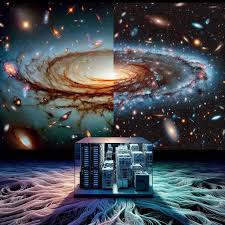S8 Tension:

The Subaru Telescope in Hawaii, using the Hyper Suprime-Cam, conducted a deep sky survey from the University of Tokyo, reported an S8 value of 0.747, consistent with prior lensing estimates.
- S8 (Sigma Eight) is a parameter used in cosmology to quantify the “clumpiness” or clustering of matter in the universe on a scale of about 26 million light-years.
- It helps determine how much matter (both visible and dark) is clustered in different cosmic regions.
- The universe began with the Big Bang ~13.8 billion years ago, starting off highly uniform, as revealed by the Cosmic Microwave Background (CMB).
- Small fluctuations in density (1 in 100,000) eventually evolved into galaxies, star clusters, and filaments, forming the lumpy structure of the present universe.
- The S8 tension refers to the mismatch in the value of S8 as obtained by:
- CMB measurements (higher value).
- Cosmic shear/lensing surveys (lower value).
- This discrepancy challenges the ΛCDM (Lambda Cold Dark Matter) model, the standard model of cosmology.
- Cosmic Microwave Background (CMB) is a sea of photons, the particles of light, present throughout the universe.
- They are left over from the Big Bang, its afterglow.
- Scientists have measured temperature changes in the CMB and studied its large-scale properties using complicated trigonometry.
- Based on these studies, cosmologists have estimated space to be expanding at around 68 kilometres per second per megaparsec ((km/s)/Mpc). That is, an object one megaparsec (3.26 million lightyears) away is moving away at 68 km/s)/Mpc.
- Cosmic shear refers to the distortion in galaxy shapes due to gravitational lensing by intervening matter.
- This lensing helps map dark matter distribution and provides an indirect method to calculate S8.
- Lower S8 from lensing suggests less clumping than expected.




